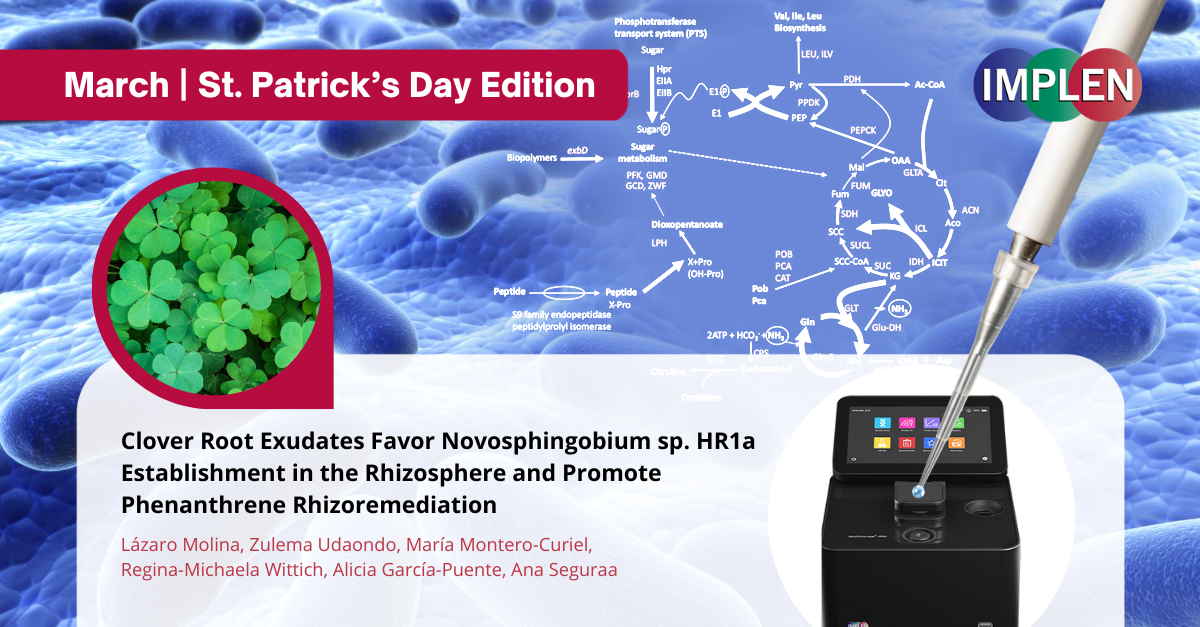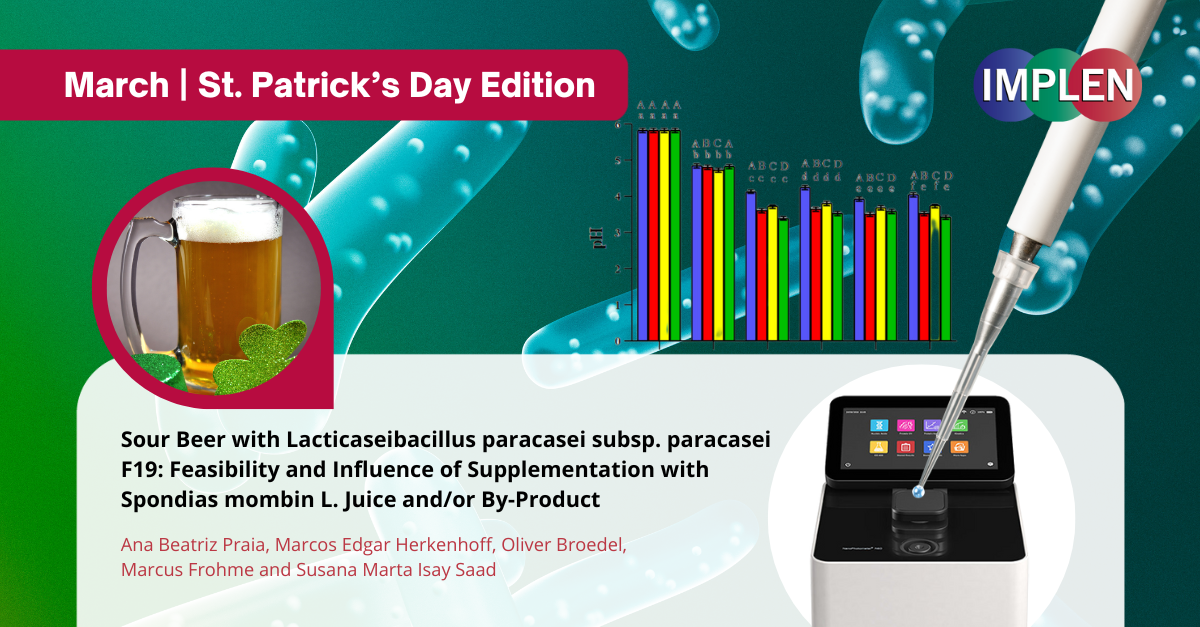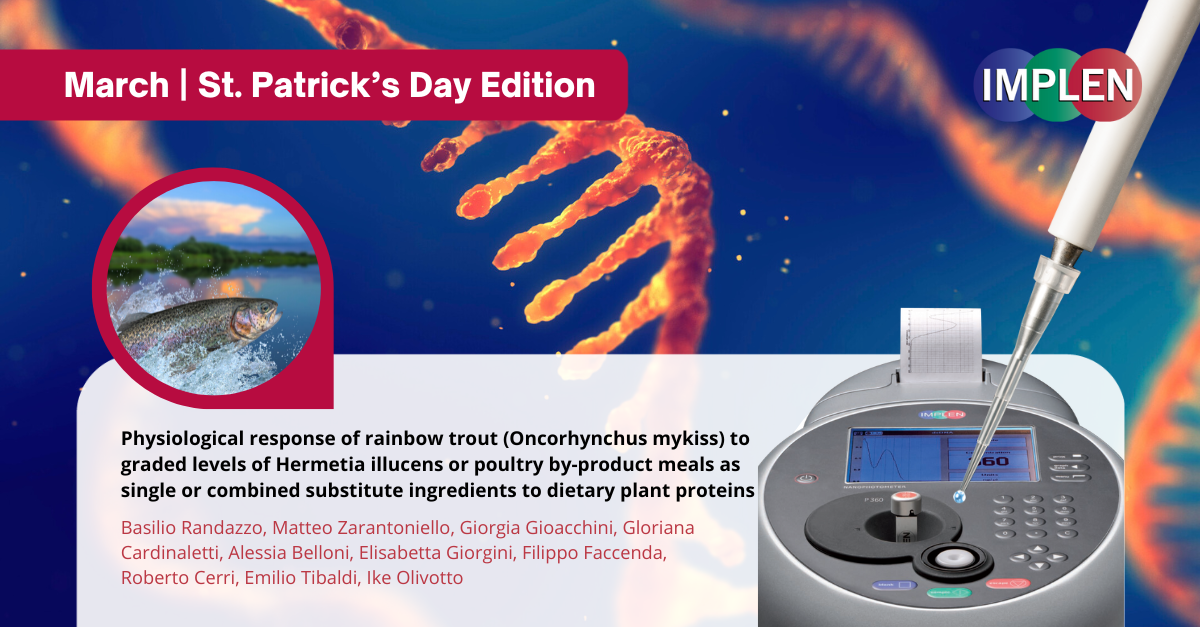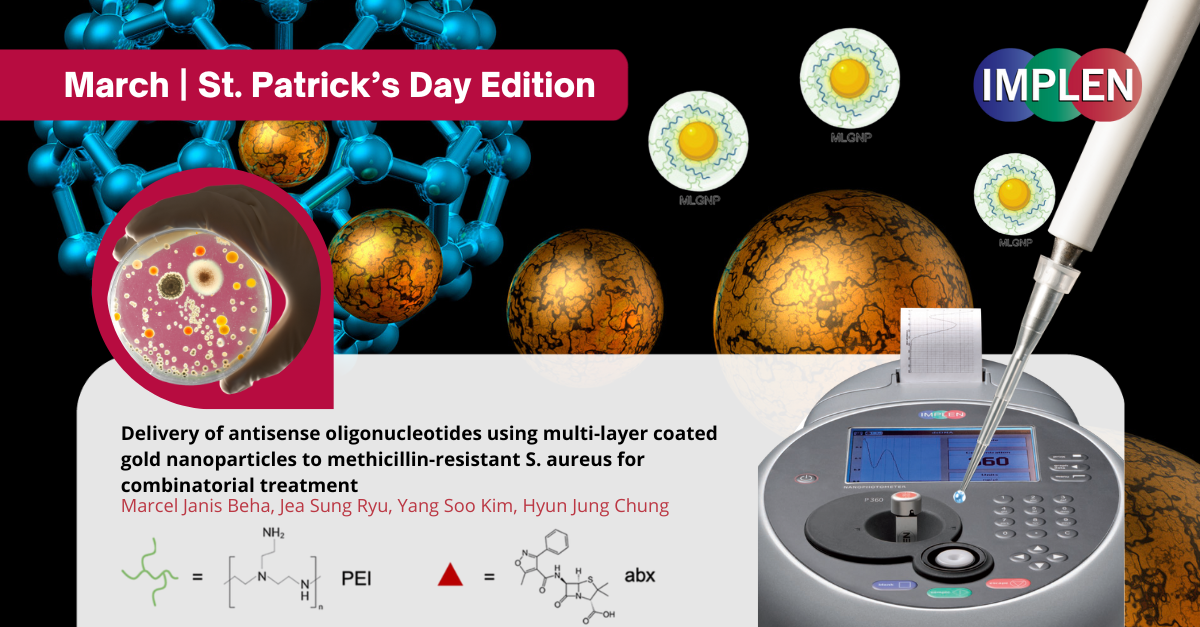Implen Journal Club | March Issue St. Patrick's Day Edition |
|
This issue of the Implen NanoPhotometer Journal Club: St. Patrick’s Day Edition is highlighting the success of an eco-friendly and cost-effective strategy for soil decontamination to benefit the growth of clover by utilizing plant-microorganism interactions. Molina et al. published a study in the journal of American Society for Microbiology demonstrating that the coexistence of clover seedlings and bacterial cells of Novosphingobium sp. HR1a allows for the establishment of mutual beneficial interactions, wherein the bacteria obtain carbon and nitrogen for growth from the plant while the plant benefits from the elimination of contaminants from the soil. Novosphingobium sp. HR1a is a good candidate for remediation due to its widespread distribution and ability to break down pollutants including a wide variety of Polycyclic aromatic hydrocarbons (PAHs). PAHs are among the most abundant contaminants in the environment and are listed as priority pollutants to be eliminated from water, soil, or sediments due to their toxicity and/or their carcinogenic activity. Bioremediation is an environmentally friendly strategy that is considered to be more cost-effective than physicochemical treatments. To improve this process, bioaugmentation, which is the addition of microbes that provide catabolic functions for the degradation of these pollutants, can be used. The NanoPhotometer® was used in this study to assess RNA purity for gene expression analysis. |
|
Next issue is covering the adventure of Dr. Beer to find a healthy sour beer with his sidekicks UV & VIS leading them to discover an article Praia et. al. recently published in the journal of Foods, that the production of a potential probiotic sour beer with L. paracasei F19 and S. cerevisiae US-05 is feasible. Sour beer has stood out in recent decades for its unique flavor and for not being a style restricted to a particular production process, origin or ingredient used, as it is characterized by acidity resulting from the high concentration of organic acids and low pH. Consequently, in most cases, it results from the fermentation of lactic acid bacteria (LAB). Probiotics such as LAB are well known as health allies and may have an effect both on human health, improving the intestinal tract and the immune system. In this sense, the formulation of a probiotic product ought to consider not only its possible consumption benefits, but also the product itself where the probiotic is being delivered. Thus, low alcohol content is desirable when thinking about potential probiotic beers, both regarding promotion of probiotic bacteria survival in the specific beer and to avoid possible health issues from abusive consumption of alcoholic beverages, which can culminate in health and social problems.
To verify the concentration, purity, and quality of extracted nucleic acids, the NanoPhotometer® N60 spectrophotometer was used. |
|
Next, join us as we celebrate St. Patrick's Day by chasing rainbows to find the gold at the end of the rainbow by featuring a recent study by Randazzo et al. In this study, the researchers evaluated the use of defatted Hermetia illucens pupae meal and poultry by-product meal as alternative protein sources in rainbow trout diets, in comparison to vegetable protein-rich ingredients. The researchers found that a medium to high substitution of dietary vegetable protein with HM and/or PBM resulted in improved growth performance and a minor incidence of distal intestine morphological alterations. Moreover, both HM and PBM led to a downregulation of inflammatory-related genes compared to the vegetable protein-rich diet. The implications of this study for the aquaculture industry are suggested by the potential beneficial role of insect meal and PBM in developing sustainable and healthy trout diets that meet sustainable economy principles. Stay tuned for more updates from the Implen NanoPhotometer Journal Club! The NanoPhotometer® P-Class was used in this study to analyze RNA concentration and integrity. |
|
The final issue is continuing on with chasing the gold at the end of the rainbow. In their recent study published in the journal of Materials Science and Engineering, Beha et al. developed a novel approach to combat multidrug-resistant bacteria by utilizing multi-layer coated gold nanoparticles for targeted delivery of antisense oligonucleotides. By silencing resistance genes in bacteria, the researchers were able to increase the susceptibility of these bacteria to antibiotics, providing a potential solution to the growing problem of antibiotic resistance. In addition, the use of combinatorial therapy with multiple drugs delivered via the nanoparticles further enhances treatment effectiveness. This study highlights the potential of this technology for targeted treatment of bacterial infections, and its implications for improving public health. The NanoPhotometer® P330 was used in this study to determine bacterial growth by measuring the optical densities at 600 nm (OD600). In addition, the NanoPhotometer was used to perform absorbance measurements on the nanoparticle formulations. |
©2023 Implen. All rights reserved.



